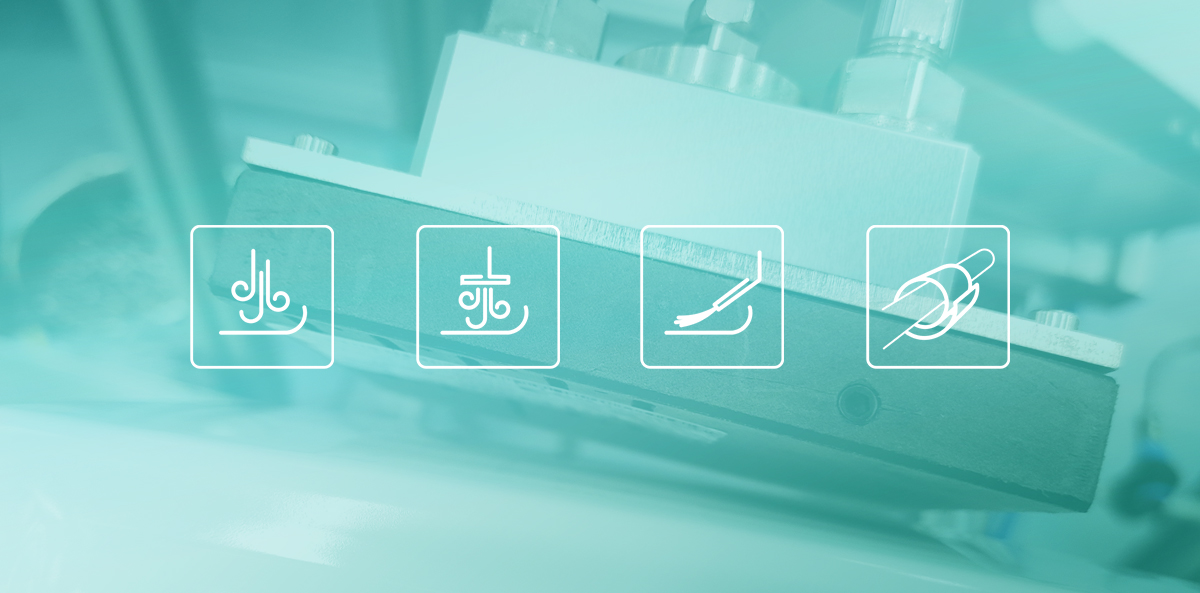
Label application methods – which method will be suitable for labelling my product?
The progressing intensification of production automation, including the automation of product labelling processes, is a phenomenon which we have been witnessing for a few years. It relates to numerous benefits for industry, commerce, or, globally, economy, and there is no suggestion that the process should stop.
If product labelling is still carried out manually in your workplace, maybe the time has come to automate this process? How can this be done?
Label applicator – first step
The most significant element of labelling automation is, of course, a suitable device which carries out the process. The parameters of the label applicator or printing and application device should be compliant with the quality requirements and provide proper efficiency for the product flow.
Before purchasing an automatic label applicator, you should consider which method or in which way you can automatically apply the label to your product.
To answer this question, it is necessary to conduct an analysis of the situation and place where the label is to be applied. Considering many factors will enable you to choose the right label application method and help you avoid wrong decisions and investments.
Label application methods
The features of the product itself and the process are the most important issues while choosing the automatic application method.
- Is the product moving or not? If the product moves, at what speed and is the speed constant or variable?
- Will the products be repetitively positioned during labelling?
- What is the position of the label application to the product (top, bottom, sides, front/back, centre, perimeter)?
- What is the size of the applied label?
- What is the expected accuracy of application?
- Will the applied label be dedicated to a specific product?
- What condition is the product in (warm/hot, soft, oily/dusty, dry/wet)?
- What material is the product made of (paper/wood/metal/plastic)?
The most popular label application methods
The most popular label application methods in automatic label applicators are Wipe-On and Tamp-Blow methods.
The Wipe-On (merge) application method is a contact method where the product must move during application. Synchronisation of the product speed and speed of the applied label is required. The direction of the product movement is also relevant. This method is perfect for the application of long labels. It is excellent for labelling flat surfaces and cylindrical surfaces with the use of an additional fixture. However, it may be problematic if the product surface is irregular.
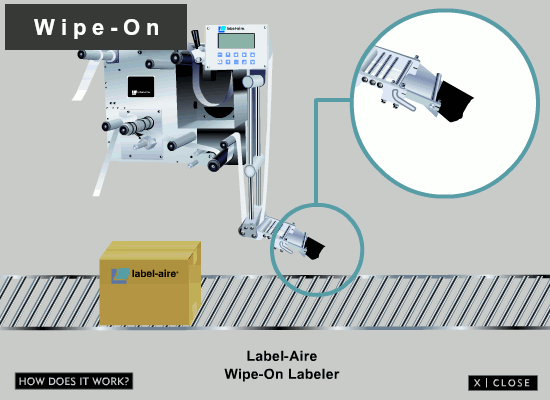
The pneumatic Tamp-Blow/Air-Blow application is a non-contact method. It does not require speed synchronisation (it is only required when high application accuracy is needed), and the direction of movement of the product is not important either. High application speed and proper handling of small labels is another advantage. The use of the actuator with the necessary stroke makes it possible to apply labels in processes where space is limited. The use of compressed air is required in this method. The label is normally blown onto the surface of the product; however, the conditions or properties of the item or label can determine the need to apply pressure on the label.
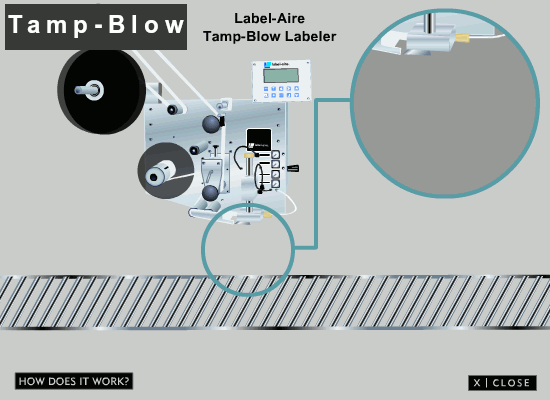
In the automotive industry, marking the product with a dedicated label is preferred, which entails the placement of the information (e.g., series number, batch number, date/hour) just before the label application. Data can be applied with the use of thermal transfer printing technology, inkjet printing or a laser. In case of labelling with an RFID tag, the dedicated information may also be invisible. For such applications, the Tamp-Blow method is preferred, in which there should be no buffer of pre-printed labels. Then, a possible disruption of queueing of both printed labels and waiting products will have an influence on incorrect labelling. An identical solution is used in the food industry. Here, the process requires weighing (usually with the use of a dynamic scale) each product and placing information about the weight on the label.
In case of serial labelling with information and marketing labels, a buffer of printed labels is allowed. Tamp-Blow labelling with label blowing and possible pressure application is preferred for:
- Marking of pallets with a logistic label
- Marking of collective packaging and cartons with a logistic label
- Labelling of products whose label contains information about the product weight and test or measurement result
- Label application in hard-to-reach places
- Precise label application, preferably during stop and repetitive positioning of the product.
When choose the tamp-blow method, and when to wipe-on?
The application of the label in hard-to-reach places, e.g., recesses, holes, internal surfaces, is related to the need for stopping the product and applying various hardware modifications of the applicator tip in the Tamp-Blow method.
The method of application of the label to the surface of the round product (around its circumference) depends on the label size, product diameter and length. In case of smaller labels and larger diameters labels can be successfully applied with the use of the Tamp-Blow method and a simultaneous pressure application of the label to the surface of the product. The condition is that the product must be stopped and positioned during label application. Long labels and small product diameters require the use of dedicated rotary heads. They apply pressure onto the label or rotate the product itself with a simultaneous label pressure application. In this case, the Wipe-On method appears to be the most rational to use and is commonly used in the food industry for labelling bottles, cans, and jars.
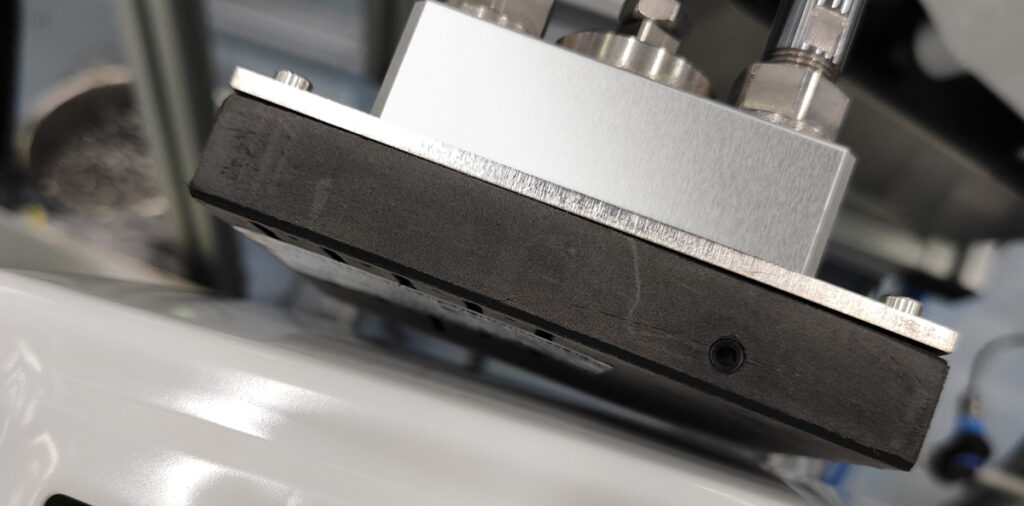
In case of serial production labelling with, for example, a marketing or information label, the Wipe-On method can be successfully used. It is preferred for:
- Information labels with repetitive data in serial production
- Marketing labels on flat and spherical surfaces
- Cylindrical products (e.g., bottles, jars) with additional pressure systems
Products can also be labelled with more than one label. Each of them, depending on the place of application or data stored on it, can be applied with the use of a different method and with a different combination of devices.
In case of more demanding products or places of label application, it may be necessary to add further pressure systems. Building dedicated application solutions may also be the only option.
It should also be remembered that the correct automatic label application will only be possible if the label adhesive used has the required properties which ensure appropriate adhesion to the labelled surface. Label application to dusty or oily surfaces should be avoided due to potential reduction in the efficiency of automatic application. In such cases, cleaning of the surface before application of the label or preventive process improvement to prevent such phenomena is required.
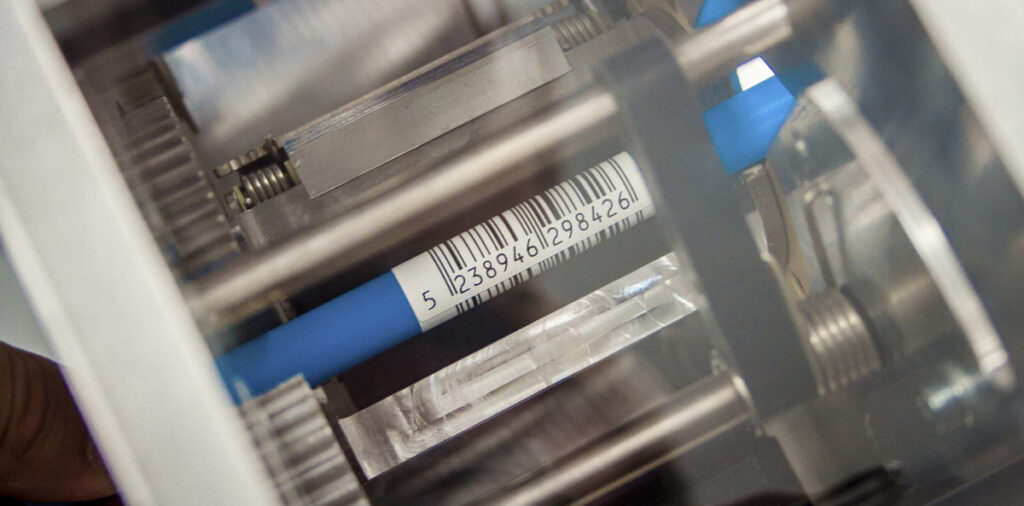
The right choice of automatic label application method will provide proper implementation of this process. It will enable you to increase production efficiency, achieve repeatability, reduce costs, and direct human resources towards the implementation of other tasks in the production plant.
If you ar interested, please contact.